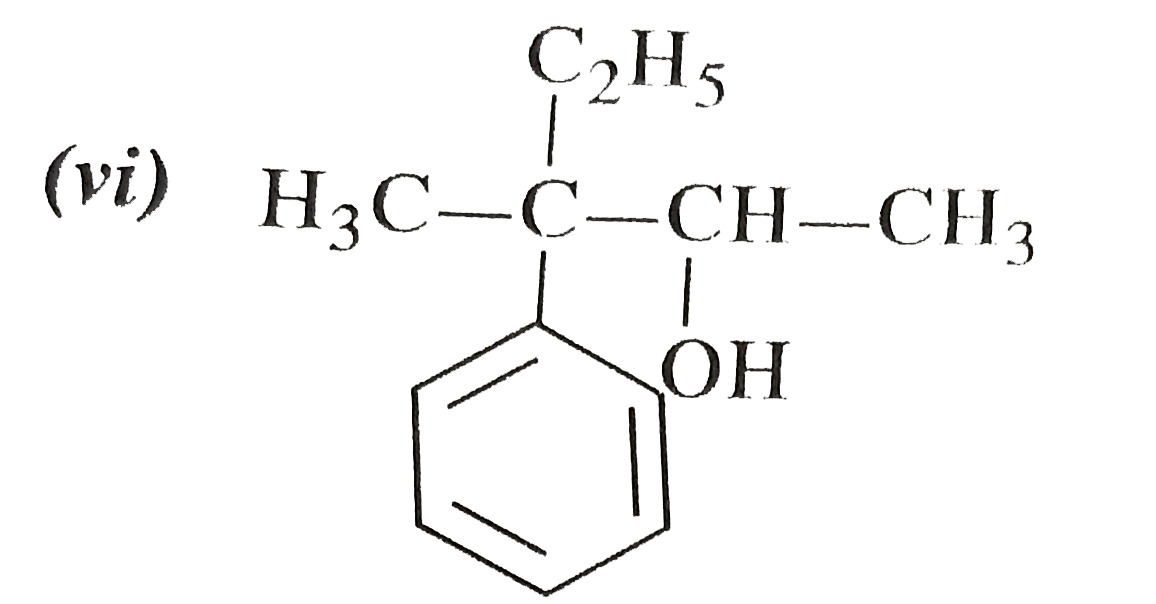CH3CH2OHx−−→CH3COH.
Out of the following three reagents, X may be
a) PDC in CH2Cl2 b) Cu,300∘C, c) C6H5N2ClSolution in Telugu
A,b and c
A and b
Only b
Only a
The correct Answer is:A
Step by step video, text & image solution for CH_(3)CH_(2)OH overset(x)rarr CH_(3)COH. Out of the following three reagents, X may be a) PDC in CH_(2)Cl_(2) b) Cu, 300^(@)C, c) C_(6)H_(5)N_(2)Cl by Chemistry experts to help you in doubts & scoring excellent marks in Class 12 exams.
Topper's Solved these Questions
- BOOK - AAKASH SERIESCHAPTER - AMINES AND DIAZONIUM SLATSEXERCISE - OBJECTIVE EXERCISE - 2 (CYANIDES AND ISOCYANIDES)2videos
AMINES AND DIAZONIUM SLATS
- BOOK - AAKASH SERIESCHAPTER - AMINES AND AZO COMPOUNDS EXERCISE - PRACTICE SHEET - 6 (Integer answer type Questions)9videos
AMINES AND AZO COMPOUNDS
- BOOK - AAKASH SERIESCHAPTER - APPENDICES -REVISION EXERCISE EXERCISE - POLYMERS44videos
APPENDICES -REVISION EXERCISE
Similar Questions
Alkylcyanides and alkylisocyanides are together called a pair of
05:48View SolutionHow many aromatic (six membered carbocyclic) isomers possible for MFC7H9N.
02:37View SolutionWhich of the following is an example of co-polymer ?
View SolutionGiven the IUPAC names of the following compounds: (i) CH_(3)CH_(2)CH_(2)underset(C_(2)H_(5))underset(|)overset(CH_(3))underset(|)(C )CH_(2)-overset(CH_(3))overset(|)(C )=CH_(2) (ii) CH_(3)-overset(CH_(3))overset(C )H-C-=CH (iii) C_(6)H_(5)-CH=CH-CH_(2)Cl CH_(3)CH-CH-CH_(2)Cl (iv) CH_(3)CH=CH-CH_(2)Br v CH_(2)=CH-overset(Cl)overset(|)(C )-CH=CH_(2) vi CH_(2)=CH-overset(CH_(2)CH_(3))underset(|)(C )H-underset(Cl)underset(|)(C )=CH_(2) vii. (CH_(3))_(3)C - CH=CH_(2)
View SolutionH2C=CH−CH2−O∣∣C−HReagent−−−−→CH2−CH2−CH2−CH2−OH
Appropriate reagent for above conversion will beView SolutionGive the IUPAC names of the following compounds:
(i)C6H5−CH2−CH2−OH (ii)CH3−CH3∣C∣CH3−CH2−CH2−OH
(iii)[(CH3)2CH]3COH. (iv)CH3−CH∣OH−CH2−CH2−O−CH2CH3
(v)CH3−CH2−CH∣Cl−CH∣CH3−CH3∣C∣OH−CH3 (vi)
(vii)(CH3)3COH (viii)CH3−CH∣CH3−CH∣OH−CH2−CH∣CH3−CH3
(ix) CH2OH |CH2−CH2−CH−CH−CH−CH3 | | CH2Cl CH3, (x) CH3−C=C−CH2OH | | CH3Br
(xi) CH2=CH−CH∣OH−CH2−CH3, (xii) CH2OH |CH3−CH−CH2−CH−CH−CH3 | | CH3 OHView SolutionIUPAC name of C_(6)H_(5) - overset(O)overset(||)C - CH_(2)CH_(2)-CH_(2)-CH_(2)-CH_(3)
View SolutionAssign the priority order number to the following atoms or groups: (a) -OH,-CH_(2)OH, -CHO,-H (b) -CHO,-CH_(2)OH,-CH_(3),-OH (c ) C_(6)H_(6)-,-CH(CH_(3))_(2),-H,-NH_(2) (d) -CH(CH_(3))_(2),-CH=CH_(2),-C-=CH,C_(6)H_(5)- (e) -CH_(3),-CH_(2)Br,-CH_(2)OH,-CH_(2)Cl (f) -OCH_(3),-N(CH_(3))_(2),-CH_(3),-H (g) -CH=CH_(2),-CH_(3),C_(6)H_(5)-,-CH_(2)CH_(3) (h) (CH_(3))_(2)CH-,-Cl,-CH_(2)CH_(2)CH_(2)Br-CH_(2)CH_(2)Br (i) -Cl,-Br,-I,-NH_(2)
03:05View SolutionGive the IUPAC name of each of the following and classify them as 1∘,2∘ and 3∘
(a) CH3(CH2)3CHOHCH(CH3)2 ,
(b) (CH3)3C−CH2OH
( c) (CH3)2C−C∣C6H5−OH
(d) BrCH3−C∣OHH2−CH−C(CH3)3
(e) CH2=CH−CHOHCH
(f) PhCH2OH
(g) HOCH2CH2CH2CH2C6H5
(h) (C2H5)2COH02:59View SolutionGive the Grignard reagent and carbonyl compound that can be used to prepare
(a) CH3−CH2−CH2−OH
(b) (CH3)2C(OH)CH2CH2CH3
( c) C6H5CH2CH(OH)CH3
(d) CH3−CH2−C6H5∣C∣C6H5−CH303:01View SolutionThe compound that reacts with NaOH . (A) CH_(3)OH (B) CH_(3)CH_(2)OH (C) C_(6)H_(5)OH (D) C_(6)H_(5)CH_(2)OH
View SolutionIn the reaction CH_(3)CH_(2)C Cl_(2)CH_(3)overset(x)rarrCH_(3)C-=C CH_(3) the reagent X is -
02:49View SolutionWhat are X, Y, Z in the following reactions ?
OH |CH3−CH−CH3x−−→CH3−CH=CH2+H2O
CH3−CH2−OHY−−→CH2=CH2+H2O
CH3 |CH3−C−OHZ−−→CH3−C=CH2+H2O | | CH3 CH309:36View SolutionWhich SN1 reaction would you expect to take place more rapidly ?
(a) (i) (CH3)3CCl+H2O→(CH3)3COH+HCl
Or
(ii) (CH3)3CBr+H2O→(CH3)3COH+HBr
(b) (i) (CH3)3CCl+H2O→(CH3)3COH+HCl
Or
(ii) C5H5Cl+H2O→C5H5OH+HCl
(c) (i) (CH3)3CCl+H2O→(CH3)3COH+HCl
Or
(ii) (CH3)3CCl+CH3OH→(CH3)3COCH3+HCl
(d) (i) (CH3)3CCl(1.0M)+CH3CH2O−(1.0M)C2H2OH−−−−→(CH3)3COCH2CH3+Cl−
Or
(ii) (CH3)3CCl(1.0M)+CH3CH2O−(2.0M)C2H2OH−−−−→(CH3)3COCH2CH3+Cl−01:15View SolutionWhich SN1 reaction would you expect to take place more rapidly ?
(a) (i) (CH3)3CCl+H2O→(CH3)3COH+HCl
Or
(ii) (CH3)3CBr+H2O→(CH3)3COH+HBr
(b) (i) (CH3)3CCl+H2O→(CH3)3COH+HCl
Or
(ii) C5H5Cl+H2O→C5H5OH+HCl
(c) (i) (CH3)3CCl+H2O→(CH3)3COH+HCl
Or
(ii) (CH3)3CCl+CH3OH→(CH3)3COCH3+HCl
(d) (i) (CH3)3CCl(1.0M)+CH3CH2O−(1.0M)C2H2OH−−−−→(CH3)3COCH2CH3+Cl−
Or
(ii) (CH3)3CCl(1.0M)+CH3CH2O−(2.0M)C2H2OH−−−−→(CH3)3COCH2CH3+Cl−View Solution

